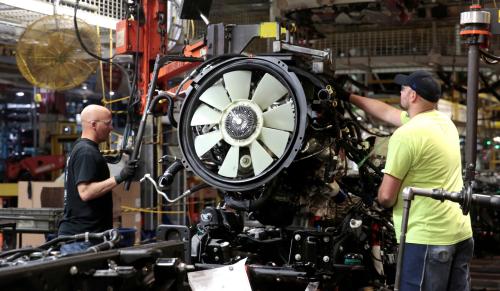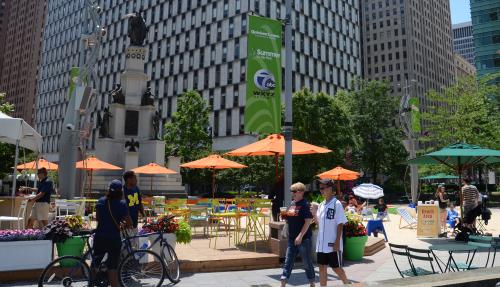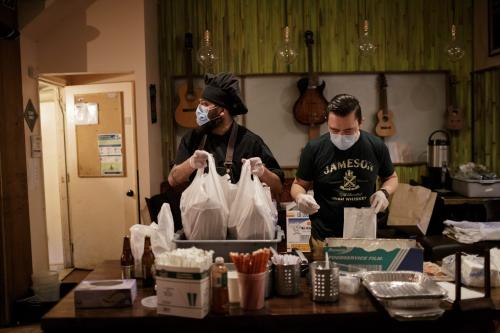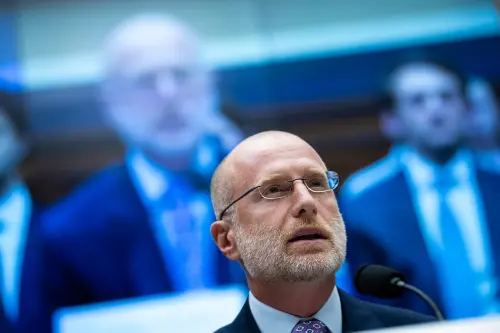Among the many truths COVID-19 has exposed about Michigan’s economy and society is the state’s stark digital divide, which is limiting educational opportunity in both highly segregated urban “blue” communities and rural “red” areas as well. Given the virtual learning demands of the COVID-19 world, closing this divide is now an imperative.
The pandemic has hit the battleground the state of Michigan particularly hard in terms of health and economic damage. President Trump’s polarizing political skirmishes have compounded the damage, with his call for supporters to march on Lansing and demand a rapid reopening from Democratic Governor Gretchen Whitmer.
The Black Lives Matter protests sweeping the country also draw into sharp relief the long-standing social, economic, and cultural divides between Michigan’s people and communities, a function of some of the nation’s harshest institutionalized racism and segregation. This racial and economic divide is proving to be deadly in the current pandemic, and only further inflaming politically stoked racial tension.
The digital divide, however, has the distinct opportunity to actually unite the reddest and bluest parts of Michigan. The digital rich—who can afford or have access to high-speed internet—will continue to thrive in a world reshaped for “distanced” everything. The digital poor—who are concentrated in the segregated poverty of Michigan cities and rural areas—can’t afford to fall further behind.
Our prior work has shown Michigan (along with many of its sister Midwest states) to be one of the nation’s laggards in making high-speed internet available to all its residents, with 70 of the state’s 83 counties showing connectivity rates below the national average. Recent research by Public Policy Associates’ Daniel J. Quinn and Nathan A. Burroughs details the county-by-county share of Michigan’s population lacking access to high-speed internet and its impact on educational opportunities. Counties with the worst rates of connectivity (as low as 36% of households, or more than 4,000 homes) are some of the reddest parts of rural Michigan, as reflected by their score from the Cook Political Report. This lack of access is a function both of rural poverty and inadequate infrastructure.

But even in strongly Democratic urban communities with much higher overall rates of connectivity, there are hot spots of disconnect. In Wayne County, home of Detroit, 23,000 households lack high-speed internet access. In Ingham County, home to Lansing, it’s 22,000 households; in Bay County, 3,599; in Saginaw County, 5,584; and in Genesee County, home to Flint, over 4,000 households aren’t wired.
These lower rates of access reflect the legacy of formerly thriving manufacturing communities, which have faced decades of institutionalized racism, concentrated poverty, and crippled public education, particularly for people of color. Whites and wealth fled the urban core cities in these counties long ago, leaving no tax base to finance connectivity nor to create a desirable target for private-sector-financed broadband. The digital divide was so bad in Detroit that the first order of business when COVID-19 struck was for private sector and philanthropic leadership to promise a computer and internet access to 51,000 Detroit public school students.
With COVID-19 cases now rising again in Michigan, back-to-school season is a newly fraught dance to determine whether and how to safely reopen. Most schools, colleges, and universities are now announcing their fall plans under general guidance from the governor. Many are announcing hybrid models, proposing some combination of socially distanced in-person and online instruction. For these models to deliver equitable learning access and results to Michigan’s students, they will have to overcome a massive digital divide based on race, income, and geography.
The good news is that closing these divides now is a broadly shared social and political imperative. The bad news is state and local governments have no money to help do it, given the massive cuts to their budgets from the ongoing pandemic recession.
The citizens, parents, and leaders of both “red” and “blue” Michigan must call a truce. United, they can put pressure on the president and federal lawmakers to close the digital divide and make education—in whatever format—work for everyone this fall. If we don’t come together, Michiganders at both ends of our political spectrum will be worse off than ever before.
Jack Farrell contributed to this post.
The Brookings Institution is committed to quality, independence, and impact.
We are supported by a diverse array of funders. In line with our values and policies, each Brookings publication represents the sole views of its author(s).






Commentary
In Michigan, closing the digital divide can unite the ‘red’ and the ‘blue’
July 23, 2020